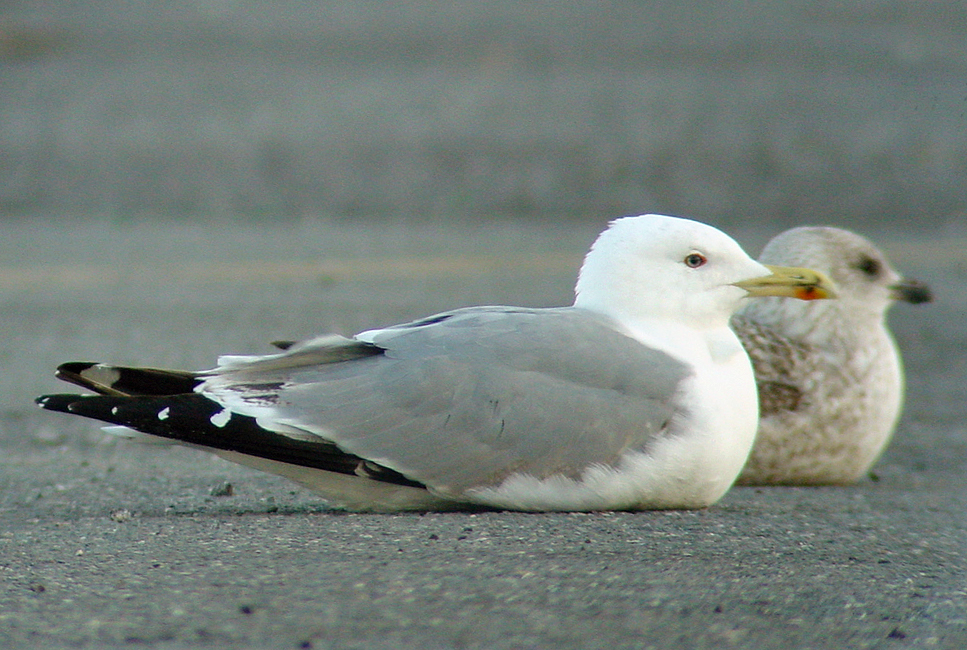 Yellow-legged
Gull - Larus michahellis
Yellow-legged
Gull - Larus michahellis
(last update: October 08 2013)
Coordinators:
Delfín González
Gabriel Martín
Antonio Gutierrez
Amir Ben Dov
Mars Muusse
Yellow-legged Gull michahellis 4CY, January 04 2002, Le Portel, France (50.43N,01.37E).
Sub-adult michahellis in 4CY as can be told by the very small white tips on the fresh outer primaries and the vermiculate pattern in the centres of the lower tertials. The white tip on P10 doesn't merge with the mirror but is separated by a broad sub-terminal band and even P5 shows a broad patch of black. Several features may indicate this bird is in 4CY (by January):
- The bill is not saturated yellow, but pale yellow, especially towards the very tip and the base of the bill.
- The bill has an obvious black mark on the upper and lower mandible near the gonydeal angle.
- The red spot on the gonydeal angle doesn't reach the cutting edge of the lower mandible. In older birds this red spot extends on the upper mandible.
- The iris is peppered or speckled, unlike the plain yellow iris in most older birds (5+cy birds).
- The wing-coverts have a brown hue, especially visible in the outer greater coverts, median coverts and lesser coverts in the carpal edge. The second and fourth greater coverts, which were moulted early in the season show paler fringes, a brown hue on the centres and dark markings towards the tips.
- The lower tertials and outer secondaries show patterns commonly found in third generation feathers: the tertials have dark centres with vermiculate spaghetti pattern towards the fringes and the outer secondaries show a brown hue on the centres, unlike the plain grey fourth generation secondaries found in 5CY michahellis.
- The primary coverts are just visible beneath the central greater coverts and show an all-dark centre with a small paler crescent on the tip. In older birds these primary coverts are all grey or at least show a grey base with sometimes some black (an accentuated shaft). Black in the primary coverts in 5+cy birds is often related to the size of the black on the primaries, which may "extend" on the primary coverts. In this individual the primary coverts are clearly not grey-based but typical third generation.
- The white tip on P10 doesn't merge with the mirror but is separated by a broad sub-terminal band and even p5 shows a broad patch of black. In older birds the black sub-terminal band on p10 is much narrower and the white mirror on P10 broader. The tips on fresh primaries are larger in adult birds.
- The tail show a small black spot on the tip of one of the central tail-feathers.
